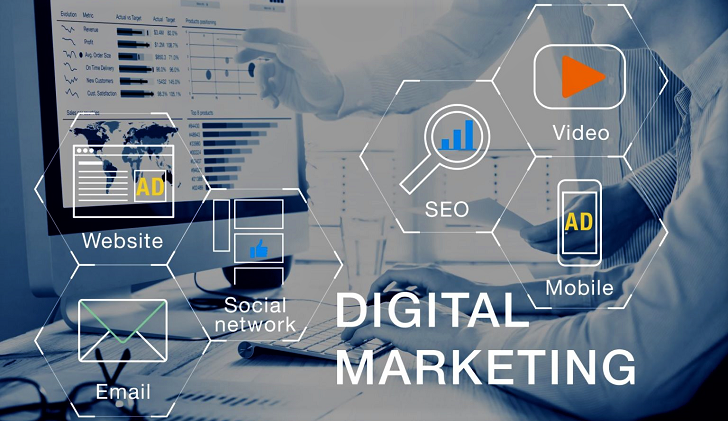
Medical device sales is a rewarding career giving your reps a chance to help save people’s lives and work a flexible and fast-paced job. However, these benefits don’t come without an equal share of medical device sales challenges. This blog post provides tips that may help you minimize any negative impact these challenges might have on your business.
A way to combat these challenges is through a proactive approach versus a reactive approach. A proactive approach means equipping your sales team with the tools necessary to address challenges before they occur.
Read on to know the proactive solutions that can help your reps and your company.
Key Takeaways
- Medical device sales pose challenges unique from other sales fields.
- You can build a strong sales team by teaching data management, customer profiling, and commercial excellence.
- You can prepare your sales reps for medical device sales challenges through quality training.
5 Main Challenges for Medical Device Sales Reps
Data management, customer profiling, and commercial excellence are crucial for resolving medical sales challenges. Here are how those strategies work for five challenges sales reps face every day.
1. Creating a Unified Brand Awareness
Your healthcare sales reps are one of many sales channels. You may also sell products through your website, call center representatives, or in stores. However, having multiple ways for hospitals and healthcare workers to purchase products also creates unified communication challenges.
Keeping your sales channels uniform in their marketing message avoids customer confusion. When information doesn’t align, buyers may feel skeptical about purchasing because they don’t know if they can trust the sales rep’s information.
Solution: A strong communication strategy includes multiple channels of communication. Here are some ways to communicate with your team so everyone is up to date with the latest product and sales information.
- Train each sales rep on a unified sales process
- Send regular emails with business updates
- Use business communication platforms like Slack
- Purchase customer relationship management (CRM) software
- Integrate online collaboration or productivity tools
- Create a company app
- Hold regular online or in-person briefing meetings
In addition, you can provide sales reps with direct phone numbers and emails to contact when they have questions about a product or lead.
2. Building Customer Relationships
Finding new customers is 5 to 25 times more expensive than keeping loyal customers. Therefore, when you have a lead, your sales reps should invest in those leads to build a strong relationship so the customer will buy from your manufacturing business in the future.
However, building a relationship with doctors isn’t easy. They are swamped, with little time available to speak with sales reps. Often, sales reps address receptionists and never have a chance to talk directly to the physician. But sales reps need conversations and feedback to find a doctor’s pain points, needs, and wants. This customer data builds the foundation for their sales strategy for hospital purchasing.
Solution: Sales reps need to learn how to pack the most content in the fewest number of words. For example, a doctor usually doesn’t need to know how much money a device will save the hospital. They typically aren’t part of the hospital’s financial committee. Instead, they want to see how the device will help a patient and make their job easier. Your sales rep’s first sentence should be a strong value proposition that differentiates the product and states why the doctor should take the time to listen to a sales pitch.
3. Understanding and Explaining Complex Products
Medical devices involve intricate technology that helps with even more complex medical situations, which sales reps need to learn. In addition, sales reps speak to highly educated medical professionals who will see through any fluff and know immediately if sales reps are knowledgeable.
Sales reps also need to be on top of the latest laws, regulations, and industry standards since they deal with healthcare devices affecting people’s lives. Inaccurate information is the fastest way to end all possibilities of making a sale.
Solution: Every sales rep needs training before entering the field. Training should include teaching industry-specific solutions for healthcare instead of general sales tactics.
4. Collecting and Organizing Sales Data
Sales and data rely on each other. In fact, on average, sales reps spend 17% of their day just entering data. Data is what helps representatives find leads, market products, and drive home a sale. However, organizing that data is a challenge all sales reps face, especially those in medical device sales, because of interacting with more complex products and customers.
Data includes all the information you collect about your customer from that first touchpoint through to the follow-up. It includes contact information, demographics, pain points, purchase history, and more.
An added challenge to data collection is protecting the data of your leads. A data leak will reflect poorly on the entire company and cost thousands of dollars in reparation and damage repair.
Sales reps also collect data on their products, current product updates, regulations relating to the product, medical device sales trends, and more. This data allows sales reps to give the most accurate information about the devices.
Solution: Sales reps should access and store data in a database with advanced security. This database will protect the data from leaks and keep it organized for representatives to access what they need at the right time. In addition, each rep should learn how to use database management systems to avoid privacy infringements.
5. Maintaining a Healthy Work-Life Balance

The medical device market is growing rapidly. In 2021, it grew by 4.7% and is projected to continue rising steadily due to an increase in chronic illnesses. Because illnesses like diabetes and heart disease require medical devices for diagnosis and treatment, the healthcare industry needs medical sales reps to meet this demand.
While the high demand for medical devices is positive for medical sales reps’ job security, they must work long hours to fill the need.
A medical sales rep’s job is not the typical 9 to 5 career. Instead, they are on-call to troubleshoot equipment or deliver life-saving devices at the right time. But this lifestyle can create an unhealthy work-life balance.
A typical day for a sales rep includes:
- Calling leads
- Pitching sales
- Troubleshooting equipment
- Training personnel on device usage
- Traveling for hospital distribution
- Joining a surgery to help with a device
Solution: Thanks to modern technology, sales reps don’t have to do everything in person anymore. Sales reps can cut back on travel by offering remote help and solutions. Manufactures can also help combat this challenge by adding diagnostic features to devices to identify possible product issues before they occur, so reps can resolve the problems faster.
In addition, you can offer additional sales training to reps to avoid costly errors and streamline the sales process.
Address Medical Device Sales Challenges with Quality Training
A common theme for all five solutions is proper training. A well-trained sales rep could save your business thousands of dollars while earning even more through strong sales tactics. However, regular sales training is not enough. They should have training specifically for the healthcare industry.
Contact Share Moving Media to talk with a representative about our sales rep training resources and courses to help your sales reps overcome common challenges.







